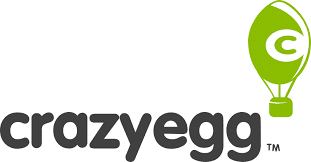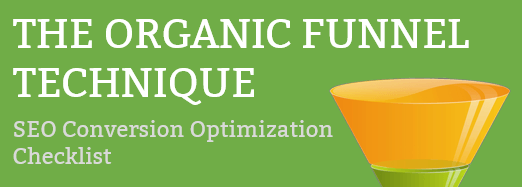
Imagine you’re a detective in the digital world. Your mission? To understand the secret language of your customers.
This isn’t just about solving a mystery; it’s about unlocking the heart of your business’s success. Our story begins with you sifting through a sea of data – blog posts, tweets, reviews. Each piece is a clue, a whisper of what your customers truly desire and fear.
As you piece together these fragments, a picture emerges. It’s the map to delivering an exceptional customer experience. Dive into this tale to uncover how content analysis isn’t just a tool; it’s your superpower in understanding and transforming the customer journey. This story isn’t just about data; it’s about discovering desires, easing pain points, and creating a world where every customer feels heard and valued.
Let’s embark on this adventure together.
How do you know if a website visitor understands your content?
If you are going to optimize your customer experience, you have to know how people interact with your content. Determining whether a website visitor understands your content can be challenging as it depends on various factors. While you cannot directly measure someone’s understanding, there are several indicators that can help you assess whether your content is effectively communicated. Here are a few ways to gauge if visitors understand your website content:
- Analytics: Analyzing website metrics can provide insights into visitor behavior. Look for metrics like time spent on page, bounce rate, and scroll depth. If visitors spend a significant amount of time on a page, scroll through the content, or navigate to other related pages, it suggests they are engaging with and potentially understanding your content.
- Conversion Rates: If your website has specific conversion goals, such as form submissions, purchases, or sign-ups, monitoring the conversion rates can indicate whether visitors comprehend your content. Higher conversion rates may indicate that visitors understand and are compelled by your messaging.
- User Feedback: Encourage visitors to provide feedback through surveys, contact forms, or comments sections. Ask specific questions about their understanding of the content, clarity of information, or if they have any remaining questions. User feedback can provide valuable insights into how well your content is being understood.
- Social Media Engagement: Monitor social media platforms for mentions, shares, and comments related to your content. Positive engagement, discussions, and sharing can indicate that your content resonates with and is comprehensible to your audience.
- Language and Reading Level: If you have a clear understanding of your target audience, you can assess the language and reading level of your content. Use appropriate language, avoid jargon or technical terms if they may confuse your audience, and ensure the content matches their reading comprehension level.
- User Testing: Conduct usability tests with a sample of your target audience. Observe their interactions with the website, ask them to articulate their understanding of the content, and note any areas of confusion or misunderstanding.
Remember, understanding is subjective, and not all visitors will fully comprehend your content. However, by considering these indicators and continuously improving your content based on user feedback and analytics, you can enhance the likelihood of effectively communicating your message to your audience.
What content metrics can you use to find out if someone understands your content?
While it is not possible to directly measure someone’s understanding of your content, there are a few metrics you can consider to assess whether your audience is comprehending your content effectively. Here are some metrics that can provide insights into content understanding:
- Time on Page: The amount of time visitors spend on a particular page can indicate their level of engagement and potential comprehension. If visitors spend a significant amount of time reading your content, it suggests they are actively engaging with it. However, it’s important to note that longer time on page doesn’t always guarantee understanding as users may also spend time skimming or multitasking.
- Scroll Depth: Analyzing how far visitors scroll down a page can provide a rough indication of their interest and engagement with the content. If users scroll through a substantial portion of the page, it suggests they are at least attempting to consume the information.
- Click-Through Rates: If your content includes links to related pages or additional resources, monitoring the click-through rates can give you an idea of whether users are seeking further information or clarification. Higher click-through rates on relevant links can indicate a desire to delve deeper into the subject matter.
- Conversion Rates: If your website has specific conversion goals, such as form submissions, purchases, or sign-ups, monitoring the conversion rates can indirectly reflect whether visitors understand your content. If visitors comprehend your content and find value in it, they are more likely to take the desired actions.
- Feedback and Comments: Actively encourage visitors to provide feedback, comments, or questions related to your content. Analyze the nature of the feedback you receive. Positive feedback, relevant questions, and thoughtful comments can indicate that your content is being understood.
- Surveys and Polls: Conducting surveys or polls on your website can provide direct insights into how well your content is being understood. Ask specific questions about the content and provide answer options that gauge the level of understanding.
- User Testing: Consider conducting usability testing or user interviews with a sample of your target audience. Observe their interactions, ask them to summarize the main points of the content, or engage in discussions to assess their comprehension.
Remember that these metrics provide indirect indications of understanding, and it’s important to interpret them in conjunction with other qualitative data and user feedback. Continuously refining your content based on these insights can help improve comprehension and engagement with your audience.
The Different Types of Analytics Tools
Customer Analytics Tools with Heap
Heap is a powerful customer analytics tool that helps businesses gather, analyze, and gain insights from user behavior data. It enables companies to understand how customers interact with their websites or mobile applications, providing valuable information to optimize user experiences, increase conversions, and drive business growth. Here’s an overview of Heap and its key features:
Data Collection: Heap simplifies the data collection process by automatically capturing every user interaction, such as clicks, form submissions, page views, and more. It eliminates the need for manual event tracking, allowing businesses to collect comprehensive data without significant implementation effort.
Event Visualizer: Heap’s Event Visualizer provides a visual representation of user interactions, enabling users to explore and understand customer behavior. It offers a user-friendly interface to analyze specific user journeys, identify bottlenecks, and discover patterns that impact conversion rates.
Auto-capture: With Heap’s auto-capture capability, businesses can collect data retroactively, even for events that were not initially tracked. This feature ensures that historical user behavior is available for analysis, empowering companies to gain insights from past data without requiring any additional tracking implementation.
Segmentation and Filtering: Heap allows users to segment and filter data based on various attributes, such as user demographics, behaviors, or custom events. This functionality enables businesses to compare different user groups, analyze their behavior patterns, and identify trends or segments that drive desired outcomes.
Funnel Analysis: Funnels in Heap help businesses understand the user journey and conversion process. Users can define specific steps and events within a funnel, analyze the drop-off rates at each stage, and identify areas for improvement to optimize conversions and user engagement.
Retention Analysis: Heap provides insights into user retention by tracking user activity over time. This analysis helps businesses understand the frequency and longevity of customer engagement, identify churn risks, and develop strategies to improve customer retention.
A/B Testing: Heap integrates with popular A/B testing platforms, allowing businesses to measure the impact of different variants on user behavior and conversion rates. By connecting A/B test results with customer analytics data, organizations can make data-driven decisions to optimize their websites or applications.
Usability Analytics Tools with Crazy Egg
Crazy Egg is a usability analytics tool that helps businesses gain valuable insights into how users interact with their websites. It offers a range of features and visualizations that provide a deeper understanding of user behavior, enabling companies to optimize their websites for improved user experiences and increased conversions. Here’s an overview of Crazy Egg and its key functionalities:
Heatmaps: Crazy Egg’s heatmaps allow businesses to visualize user activity on their websites. Heatmaps provide a graphical representation of where users click, scroll, and spend the most time on a web page. This information helps identify hotspots, areas of interest, and potential usability issues that can be optimized to enhance user engagement.
Scrollmaps: With scrollmaps, Crazy Egg provides insights into how far users scroll on a page before losing interest or leaving. By understanding where users typically stop scrolling, businesses can optimize their content placement and call-to-action placement for maximum visibility and impact.
Confetti Reports: Crazy Egg’s Confetti Reports offer a detailed breakdown of user clicks based on different attributes such as referral sources, devices, or traffic segments. This feature helps identify specific user segments and understand their behavior patterns, enabling businesses to tailor their website experiences accordingly.
Overlay Reports: Overlay reports provide information on the number of clicks received by specific elements or links on a webpage. This helps businesses identify which elements are attracting the most attention and which may be overlooked. By optimizing the placement and design of important elements, companies can increase user engagement and conversion rates.
User Recordings: Crazy Egg offers the ability to record and replay user sessions, providing a firsthand view of how visitors navigate and interact with a website. User recordings allow businesses to identify usability issues, spot areas of confusion or frustration, and gain insights into user behavior that can inform website improvements.
A/B Testing: Crazy Egg integrates with popular A/B testing platforms, enabling businesses to test different variations of their website and analyze the impact on user behavior. By comparing click and conversion rates between different versions, companies can make data-driven decisions to optimize their website design and content.
Mobile Analytics: Crazy Egg provides mobile-specific features and analytics to understand user behavior on mobile devices. Mobile heatmaps and scrollmaps help businesses optimize their mobile experiences and ensure a seamless user experience across different screen sizes.
A/B and Multivariate Testing with VWO
VWO (Visual Website Optimizer) is a comprehensive A/B testing and conversion optimization platform. It provides businesses with the tools and insights needed to experiment, test, and optimize their websites or landing pages. With VWO, companies can make data-driven decisions to enhance user experiences, increase conversions, and drive business growth. Here’s a brief overview of VWO’s key features:
A/B Testing: VWO simplifies the process of creating and running A/B tests without requiring coding skills. Users can easily set up multiple variations of a webpage, test different elements such as headlines, layouts, buttons, or images, and compare their performance to determine the most effective version.
Multivariate Testing: With VWO’s multivariate testing capabilities, businesses can test multiple combinations of variations simultaneously. This feature allows for more complex experiments, providing insights into how different combinations of elements impact user behavior and conversions.
Visual Editor: VWO’s visual editor enables users to make changes to their website without any coding knowledge. It provides a WYSIWYG (What You See Is What You Get) interface, allowing users to edit elements directly on the page, customize designs, and create variations for testing.
Conversion Goal Tracking: VWO helps track and measure conversions by defining specific goals, such as form submissions, purchases, or sign-ups. It provides detailed reports on conversion rates, allowing businesses to assess the impact of their experiments and optimize their conversion funnels.
Advanced Targeting and Segmentation: VWO allows businesses to target specific visitor segments based on various attributes, such as location, device, traffic source, or user behavior. This targeting capability enables personalized experiments and ensures that the right variations are shown to the right audience, maximizing the impact of A/B tests.
Behavioral Insights: VWO provides behavioral insights by tracking user interactions and engagement on websites. Heatmaps, clickmaps, scrollmaps, and session recordings help businesses understand how users navigate and interact with their site, identify areas of interest, and uncover potential optimization opportunities.
SEO Analytics with Ubersuggest
Ubersuggest is a powerful SEO (Search Engine Optimization) tool that provides a comprehensive set of features to help businesses improve their organic search visibility and optimize their website performance. With its wide range of tools and data, Ubersuggest offers valuable insights and analysis to enhance website rankings, analyze competitors, and drive organic traffic. Here’s a brief overview of their key features:
Keyword Research: Ubersuggest offers a robust keyword research tool that allows businesses to discover relevant keywords, assess their search volumes, analyze keyword difficulty, and identify keyword opportunities. This helps companies optimize their content and target the right keywords to increase organic visibility.
Site Audit: Ubersuggests’ site audit feature helps identify technical issues that may impact website performance and search rankings. It crawls and analyzes websites for errors, broken links, duplicate content, and other SEO-related issues, providing actionable recommendations for improvement.
Backlink Analysis: Ubersuggest provides extensive backlink data, allowing businesses to analyze their own backlink profile and that of their competitors. Users can assess the quality and quantity of backlinks, identify linking opportunities, and monitor their backlink growth over time.
Competitor Analysis: Ubersuggest enables businesses to gain valuable insights into their competitors’ SEO strategies. Users can analyze competitors’ organic search rankings, keywords they rank for, backlink profiles, and content strategies. This information helps identify opportunities, benchmark performance, and adjust SEO strategies accordingly.
Rank Tracking: Ubersuggest provides rank-tracking capabilities to monitor website rankings for target keywords over time. Users can track their progress, identify fluctuations, and measure the impact of SEO efforts on search engine rankings.
Using a Content ROT Analysis to Find ROTten Content
If you haven’t heard of a Content ROT Analysis, let’s define it first.
- Redundant: duplicate content or data, either stored internally or published externally
- Obsolete: content or data that is longer accurate or useful to the end user
- Trivial: information that is not valuable or necessary to store
Let’s delve into why you should prioritize ROT analysis to maintain the health of your content and data.
The Consequences of Rotten Content: When content teams struggle to keep up with increasing demands for more content, there’s a risk of content going rotten. Rotten content, which may be outdated, disorganized, or irrelevant, fails to perform to its potential. Much of this decline in performance is due to content decay. This can lead to a decrease in audience engagement and prompt them to seek more useful information elsewhere. Simple actions like regularly updating tags and meta descriptions can prevent this channel churn and keep your content fresh.
Impact on Performance and Data Accuracy: Rotten content not only affects audience engagement but also hampers accurate measurement of content performance. As content volume increases, it becomes challenging to gather reliable insights to make data-driven decisions and improve content engagement. To overcome this challenge, leveraging key content marketing metrics becomes crucial in accurately assessing content performance.
Data Management: A Content Responsibility: Data is an integral part of content strategy and marketing decisions. Disorganized, duplicated, or outdated data frustrates stakeholders who need accurate information to make effective content decisions. Having a streamlined and accurate data management system is essential to push the right content at the right time to the right audience, enhancing the overall content strategy.
The Importance of ROT Analysis: To combat the negative impact of rotten content and data, performing a ROT analysis is critical. A ROT analysis involves identifying and refreshing outdated or redundant content and data. It ensures that your content remains fresh, relevant, and aligns with your content strategy.
Benefits of ROT Analysis: Refreshing your content and data through a ROT analysis offers several benefits:
- Improved Content Engagement and Performance: Fresh, impactful content that addresses audience needs leads to increased engagement and site performance.
- Increased Productivity: Streamlined content and data workflows result in improved organizational productivity.
- Clean and Meaningful Data: Accurate and meaningful data drives targeted campaigns and facilitates decision-making.
- Enhanced Site Performance: ROT analysis optimizes content to meet user needs, simplifies the user experience, and improves site speed and load time.
Final Thoughts on Using Content Analytics to Improve Your Customer Experience
As we wrap up our digital detective journey in understanding the secret language of customers through content analysis, remember that the clues lie in the details.
Your customers are speaking through their interactions with your content – are you listening? Uncover the full potential of your digital strategy by harnessing the power of content analytics to enhance customer experiences. Ready to transform your approach and drive impactful results? Dive deeper into our comprehensive strategies and tools at Click Laboratory.
Begin your journey to exceptional customer insights right here.




